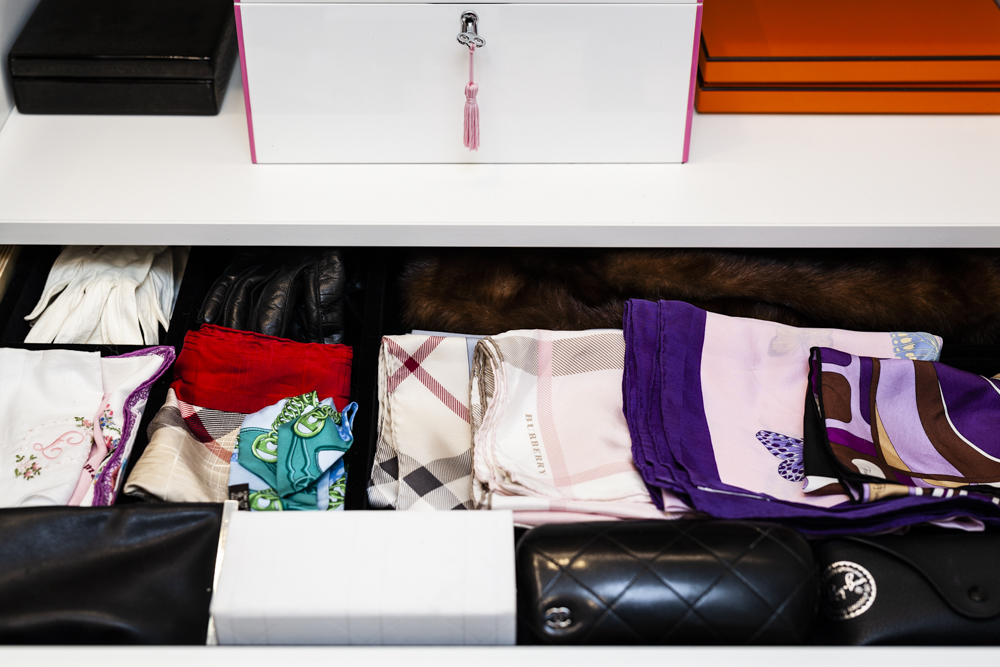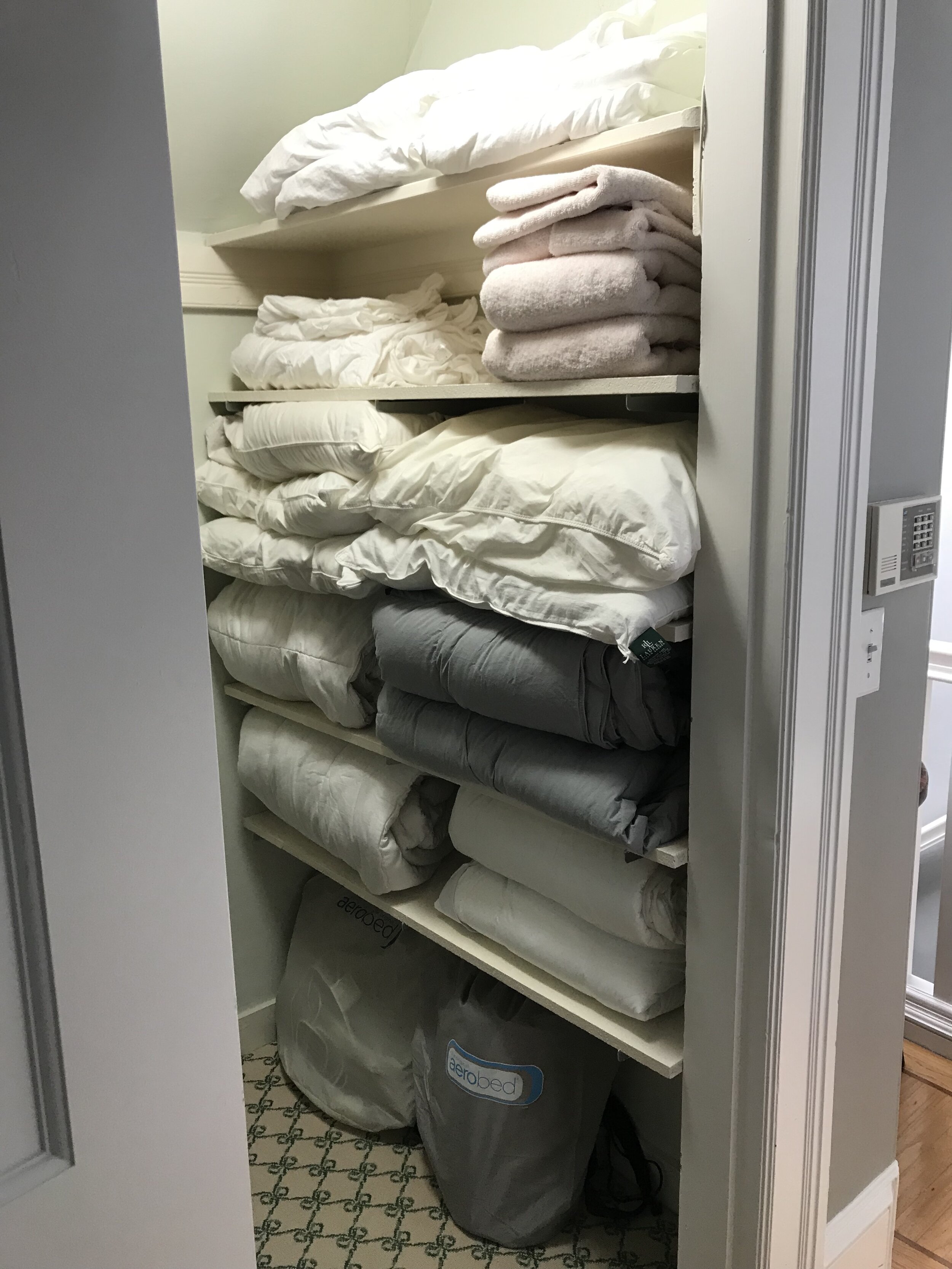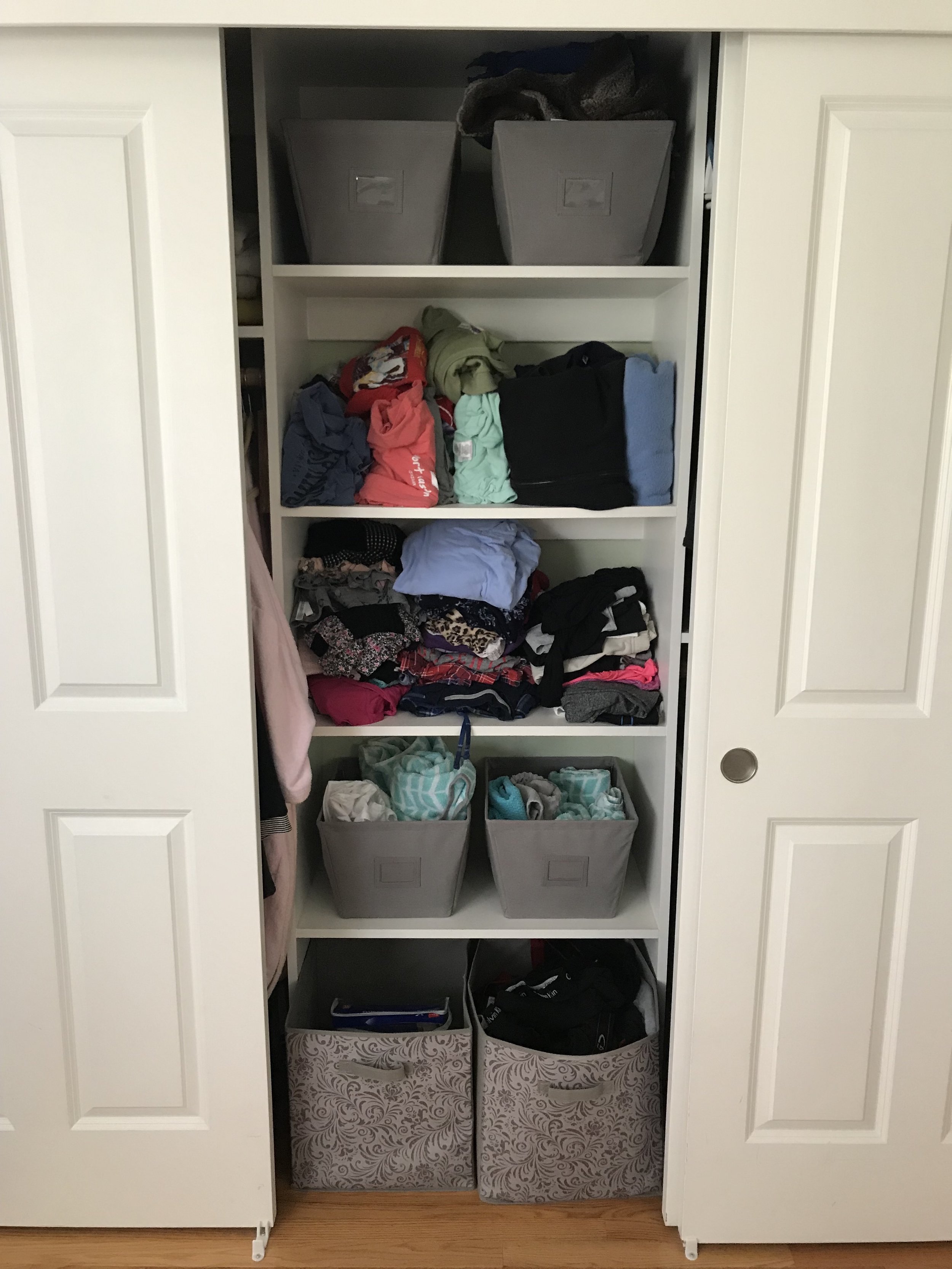How to Design A Custom Closet in 5 Easy Steps
If you own your home, or can get permission from your landlord, one of the best ways to organize your wardrobe is to install a closet system. A coherent system will optimize your space, create a clean look, and help you keep everything organized for the long term.
But how, you ask, do I pick from the myriad closet system options available? How do I know what elements to include?
The process can seem overwhelming, but you can break down the creation of your dream closet into 5 concrete steps.
Photo by Kelly Vorves
Step 1: Declutter and measure.
You KNOW I was going to start here! The closet of your dreams will contain only clothes and accessories that make you feel great when you put them on. That, and you need to know how much of each category of clothing, shoes, and accessories you’ll be storing in that closet. Don’t forget to account for the fact that you will shop again in the future - give yourself some breathing room!
Step 2: Choose your product.
There are A LOT of options out there, from big box stores on up to solid wood custom. First, weigh your budget, your aesthetic, and the flexibility you need from your storage to narrow down what type of system you’re shopping for. Then you can look at a couple of manufacturers in that space and select the one that’s right for you.
Whatever you choose, know that a closet will seem way more expensive than it should be - frustratingly so - but once it’s installed, you’ll be so glad you made the investment!
Step 3: Consider your personal wardrobe.
Closet companies all have a recommended basic layout for both men’s and women’s closets that they start with, but to truly get the best solution for your wardrobe you’ll need to have a really good handle on what you own and how you like to store it.
Do you wear more separates or dresses? Do you like to fold your knits on shelves, or in drawers? Is a varied collection of shoes and bags important to you, or do you only own tried and true essentials? What about belts, ties, and hats - are they key parts of your wardrobe or just sometimes pieces? The answers to all these questions will determine which closet elements you need and the appropriate proportion within the space.
Step 4: Save space and flexibility.
Closet companies have developed modular options that are specifically designed for particular items. But sometimes, those mods actually aren’t the most space efficient way to store things! For example, regular old flat shelves fit more shoes than angled shoe shelves.
Also, don’t be afraid to move things around or ask for more pieces! In most systems, the shelves and hanging bars are all adjustable, so you can custom fit each shelf height to the items it stores and add more to maximize the space.
Photo by Kelly Vorves
Step 5: Add finishing touches.
It’s the little things that truly make a closet feel perfectly organized. I generally don’t believe in cluttering a closet with lots of labeled containers, especially when you’ve been able to design the space to your specifications. But one thing I do highly recommend is starting with a complete set of matching hangers. This allows the hangers to recede into the background of your visual field and puts your focus where it should be: on the clothes!
I absolutely love the process of designing a beautiful closet for a client - it’s such a gift to the client every time they get dressed! If you want to create your own dream closet but feel stuck or overwhelmed, I can help. Click here to contact me or schedule a complimentary in-home consultation.
LMW











You can instantly conjure an image of what French Girl Style looks like in your head and it’s an image you likely want to see yourself in.